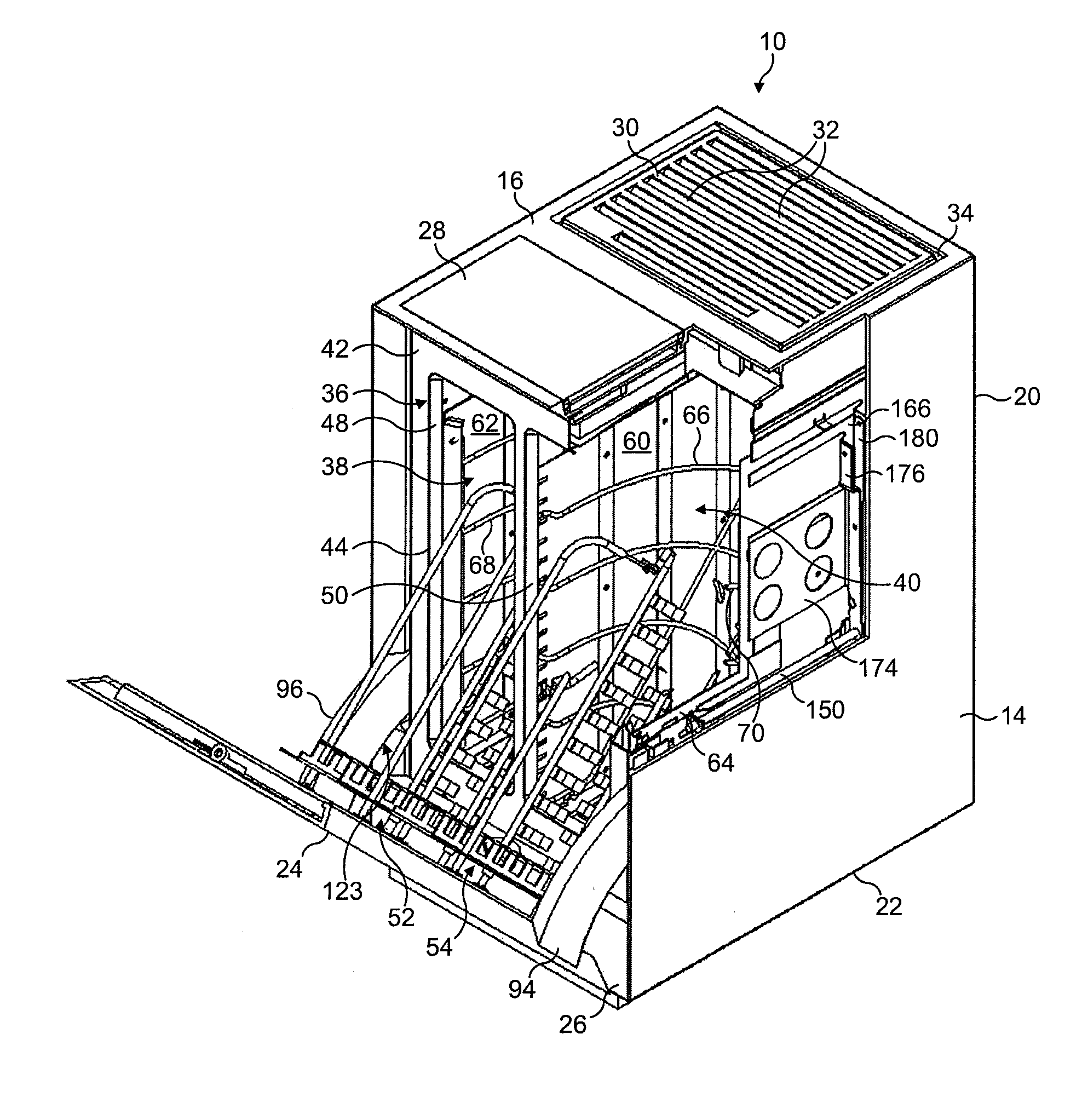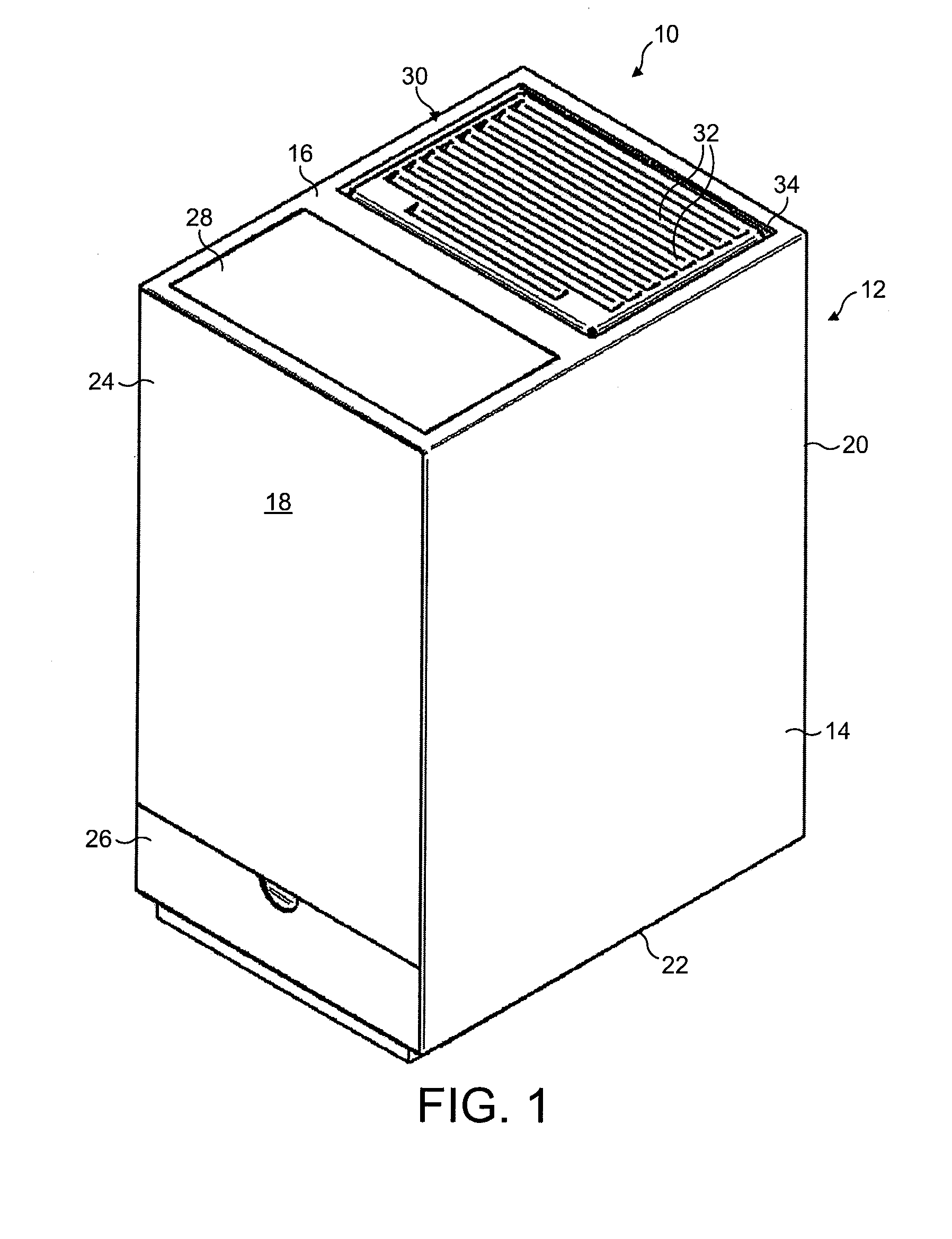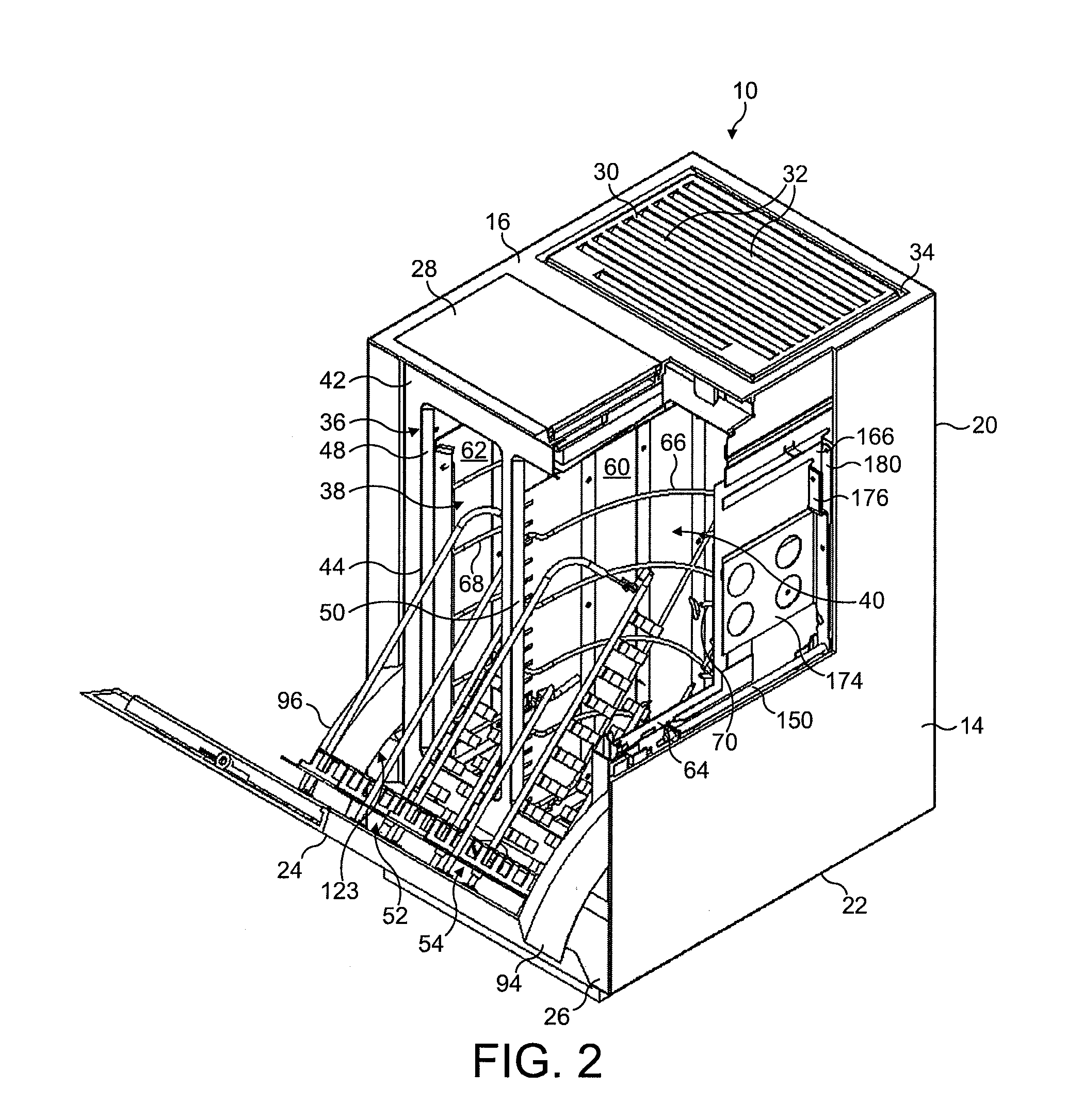Domestic appliance
a technology for cooking appliances and ovens, applied in baking, electric heating for furnaces, food science, etc., can solve the problem of increasing the intensity of the illumination of the toasting chamber during the day, and achieve the effect of improving the degree of browning of the toasted foodstuffs
- Summary
- Abstract
- Description
- Claims
- Application Information
AI Technical Summary
Benefits of technology
Problems solved by technology
Method used
Image
Examples
Embodiment Construction
[0038]With reference to FIGS. 1 to 3, a toasting appliance is shown in the form of a domestic electric toaster 10. The toaster 10 comprises an outer cabinet 12 having two side surfaces 14 and, extending between the side surfaces 14, an upper surface 16, a front surface 18, a rear surface 20 and a base 22. In this example, each of the side, front, and rear surfaces 14, 18, 20 is substantially flat, with the cabinet 12 being generally in the shape of cuboid, or right parallelepiped. Although the edges between adjoining surfaces of the cabinet 12 may be chamfered, it is preferred that the radius of each chamfer is less than 1 mm, preferably around 0.75 mm.
[0039]A substantial part of the front surface 18 comprises a door 24. The door 24 is arranged to pivot downwardly and away from the upper surface 16 of the cabinet 12 when moving from a closed position, as shown in FIG. 1, to an open position, as shown in FIGS. 2 and 3. The front surface 18 of the cabinet 12 further comprises the fron...
PUM
 Login to View More
Login to View More Abstract
Description
Claims
Application Information
 Login to View More
Login to View More - R&D
- Intellectual Property
- Life Sciences
- Materials
- Tech Scout
- Unparalleled Data Quality
- Higher Quality Content
- 60% Fewer Hallucinations
Browse by: Latest US Patents, China's latest patents, Technical Efficacy Thesaurus, Application Domain, Technology Topic, Popular Technical Reports.
© 2025 PatSnap. All rights reserved.Legal|Privacy policy|Modern Slavery Act Transparency Statement|Sitemap|About US| Contact US: help@patsnap.com



